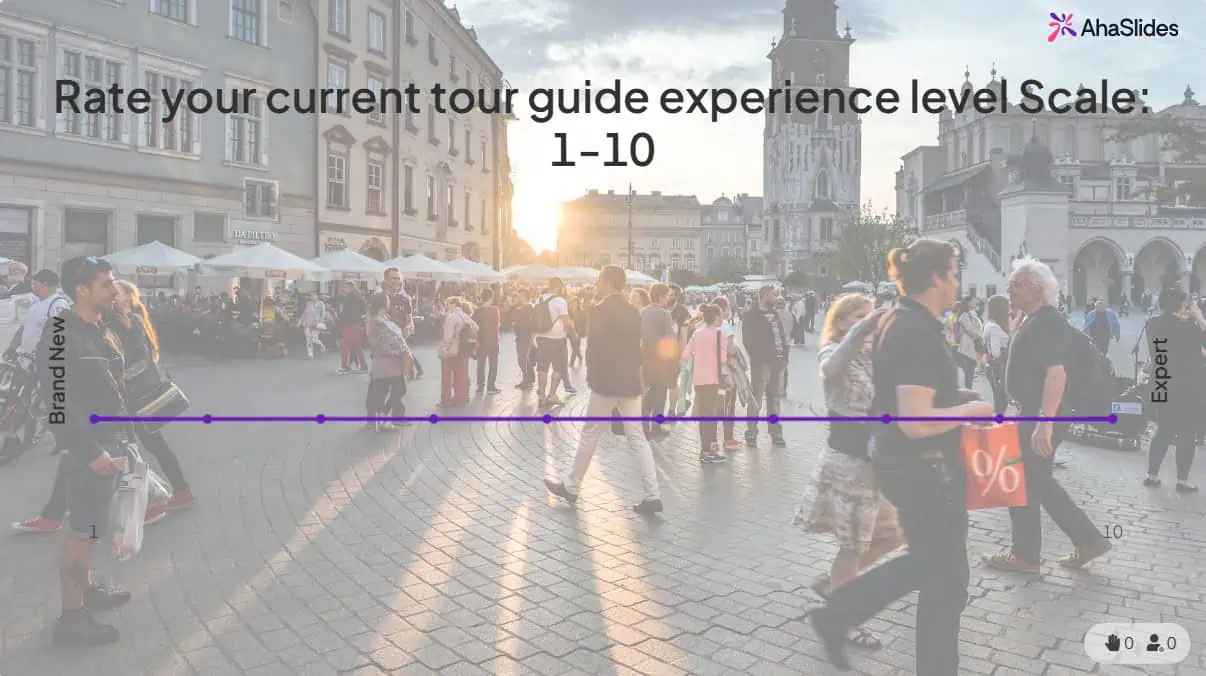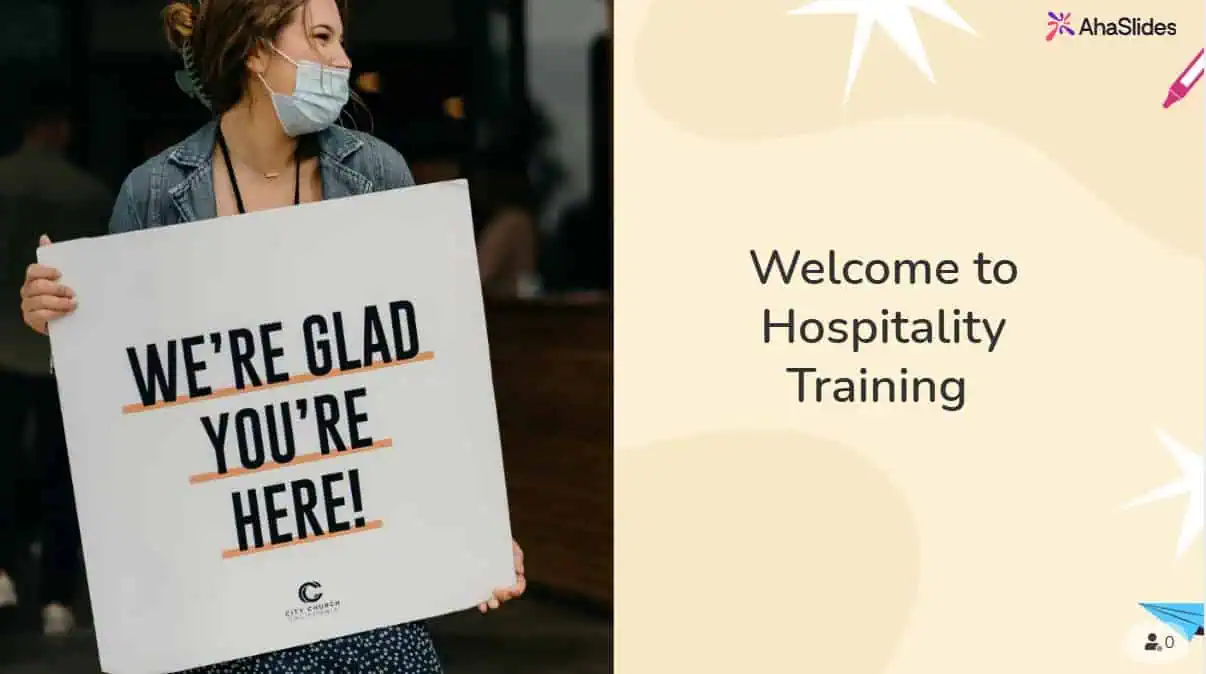Horowa yana taka muhimmiyar rawa wajen tsara ingancin sabis, ƙa'idodin aminci, da riƙe ma'aikata a cikin masana'antar baƙi. Duk da haka, hanyoyin al'ada - zaman na hannu, kayan tushen takarda, da kuma gabatarwa - sau da yawa suna gwagwarmaya don ci gaba da tafiya tare da buƙatun aiki, haɓaka buƙatun yarda, da saurin sauyawa na gama gari a fagen.
Canji na dijital a cikin horo ba kawai game da zamani ba ne; game da aiki ne, daidaito, da kyakkyawan sakamako. Laka yana ba da wata hanyar da ta samo asali a cikin sassauci, hulɗa, da aikace-aikacen ainihin duniya, yana ba ƙungiyoyi damar koyo a cikin sauri tare da kayan aikin da ke tallafawa fahimta, tunani, da haɗin gwiwa.
- Kalubalen Horon Baƙi na Gargajiya
- Abubuwan Amfani na Gaskiya na Duniya a Horon Baƙi
- Ribar Muhalli da Aiki Daga Rashin Takarda
- Ƙarfafa Ɗaukaka Ta Hanyar Maimaituwar sarari da Multimedia
- Kula da Ci gaban Ci gaba da Ka'idodin Biyayya
- Muhimman Fa'idodin Ga Ƙungiyoyin Baƙi
- Nasihu masu Aiki don Samun Mafificin Koyarwar Baƙi na Dijital
- Kammalawa: Koyarwa Wayo don Masana'antu Masu Buƙatu
- Samfura don farawa
Kalubalen Horon Baƙi na Gargajiya
Horon baƙo dole ne ya daidaita samun dama, daidaito, da ingancin farashi. Koyaya, shingaye da yawa sun ci gaba:
- Mai tsada-tsari: Bisa lafazin Mujallar horo (2023), kamfanoni sun kashe matsakaicin $954 ga kowane ma'aikaci a kan shirye-shiryen horarwa a bara - wani gagarumin zuba jari, musamman a cikin manyan wurare masu tasowa.
- Rushewa ga AyyukaJadawalin zama na cikin mutum yakan haifar da tsangwama ga mafi girman sa'o'in sabis, yana sa da wahala a ba da daidaito, horo mara yankewa.
- Rashin daidaituwa: Ingancin horo na iya bambanta dangane da mai gudanarwa, wanda ke haifar da rashin daidaiton sakamakon koyo a tsakanin ƙungiyoyi.
- Matsi na tsari: Sabbin ƙa'idodin yarda suna buƙatar sabuntawa akai-akai, kuma tsarin jagora sau da yawa yakan gaza wajen sa ido da takaddun bayanai.
- Babban Juyin Juya: The Restauranungiyar Abincin ƙasa (2023) ya ba da rahoton yawan canjin kuɗi tsakanin 75% da 80% kowace shekara, yin ci gaba da sake horarwa duka biyu masu mahimmanci da tsada.
Wadannan al'amurra suna nuna buƙatar mafi daidaitawa, daidaitawa, da ma'auni don horo a cikin baƙi.

Abubuwan Amfani na Gaskiya na Duniya a Horon Baƙi
Nasarar horarwar haɗin gwiwa ta ta'allaka ne ba kawai a cikin kayan aikin ba amma ta yadda ake amfani da su. A ƙasa akwai wasu lokuta na gama-gari kuma masu tasiri:
- Icebreakers da Gabatarwar Ƙungiya
Gizagizai na kalmomi da jefa ƙuri'a na taimaka wa sababbin ma'aikata da sauri haɗi tare da membobin ƙungiyar da al'adun kamfani, saita sauti mai kyau daga farko. - Binciken Ilimi Lokacin Zama
Tambayoyi na lokaci-lokaci don auna fahimta da ba da amsa nan take-manufa don ƙarfafa mahimman bayanai a cikin aminci, sabis, ko tsarin manufofin. - Sauƙaƙe Tattaunawa da Rarraba Ƙwarewa
Q&A da ba a san su ba da kayan aikin ƙwaƙwalwar ƙwaƙwalwa suna ƙirƙirar wurare masu aminci don raba ra'ayoyi, tambayoyi masu yawa, ko bitar yanayin sabis daga canje-canje na gaske. - Manufa & Ƙarfafa Tsari
Ayyuka masu daidaitawa ko ayyukan rarrabawa suna taimakawa yin hadaddun bayanai ko maɗaukakiyar bayanai mafi kusanci da abin tunawa. - Bayanin Zama da Tunani
Ra'ayin ƙarshen zama yana haifar da buɗaɗɗen zaɓe yana ƙarfafa tunani, yana ba masu horarwa haske mai mahimmanci game da abin da ke daɗaɗawa da abin da ke buƙatar ƙarfafawa.
Waɗannan aikace-aikacen suna taimakawa cike gibin da ke tsakanin kayan aikin dijital da aikace-aikacen ilmantarwa a kan bene.
Ribar Muhalli da Aiki Daga Rashin Takarda
Har yanzu horo na tushen takarda yana mamaye wuraren aiki da yawa, musamman lokacin hawan jirgi. Amma ya zo da nakasar muhalli da kayan aiki. A cewar hukumar Hukumar Kare Muhalli (2021), takardar lissafin fiye da 25% na sharar gida a Amurka.
Digitizing horo tare da AhaSlides yana kawar da buƙatar bugu da ɗaure, rage tasirin muhalli da farashin kayan jiki. Hakanan yana tabbatar da sabuntawa ga abun cikin horo za a iya fitar da su nan take-babu sake bugawa da ake buƙata.

Ƙarfafa Ɗaukaka Ta Hanyar Maimaituwar sarari da Multimedia
Nazarin a cikin ilimin halin dan Adam ya dade yana nuna fa'idodin sake maimaitawa - yin bitar bayanai a cikin tsaka-tsaki don haɓaka ƙwaƙwalwar ajiya (Vlach, 2012). An shigar da wannan dabarar a cikin kwararar horo na AhaSlides, yana taimaka wa ɗalibai su riƙe mahimman bayanai yadda ya kamata a kan lokaci.
Ƙaddamar da wannan su ne tsarin multimedia-hotuna, zane-zane, gajerun bidiyoyi-waɗanda ke sa bayanan ƙididdiga ko fasaha sun fi narkewa. Ga ƙungiyoyi waɗanda harshensu na farko ƙila ba Ingilishi ba ne, tallafin gani na iya taimakawa musamman wajen haɓaka fahimta.
Kula da Ci gaban Ci gaba da Ka'idodin Biyayya
Ɗaya daga cikin maɗaukakiyar al'amuran horon baƙi shine tabbatar da bin doka: tabbatar da cewa kowane memba na ƙungiyar ya kammala horon da ake bukata, ya shafe mahimman bayanai, kuma ya ci gaba da kasancewa tare da canje-canje.
AhaSlides yana ba da ƙididdigar ginanniyar ƙididdiga waɗanda ke barin masu horarwa da manajoji su bi ƙa'idodin kammalawa, aikin tambayoyin, da matakan haɗin gwiwa. Ba da rahoto mai sarrafa kansa yana sauƙaƙe shirye-shiryen dubawa kuma yana tabbatar da cewa ba a bar kowa a baya ba, musamman mahimmanci a masana'antu masu tsauraran aminci ko ka'idojin sarrafa abinci.
Muhimman Fa'idodin Ga Ƙungiyoyin Baƙi
- Budget-Mai hankali: Rage dogara ga masu horo na waje da kayan aiki yayin inganta daidaito.
- Ma'auni don Kowane Girman Ƙungiya: Horar da sabbin ma'aikata ko dukan rassa ba tare da ƙulla kayan aiki ba.
- Ingancin Horon Uniform: Isar da abu iri ɗaya ga kowane ɗalibi, tare da rage gibin fahimta.
- Karamin Rushewa: Ma'aikata za su iya kammala horo a kusa da lokutan su, ba a lokacin lokutan da suka fi girma ba.
- Yawan Riƙewa Mafi GirmaMaimaituwa da haɗin kai suna tallafawa koyo na dogon lokaci.
- Ingantattun Kula da Biyayya: Sauƙaƙe bin diddigin ci gaba yana tabbatar da cewa koyaushe kuna shirye-shiryen dubawa.
- Sauƙaƙe Kan Jirgin Sama: Tsare-tsare, hanyoyin ilmantarwa na taimaka wa sababbin ma'aikata su zama masu hazaka da wuri.
Nasihu masu Aiki don Samun Mafificin Koyarwar Baƙi na Dijital
- Fara da Core Compliance Modules: Ba da fifiko ga lafiya, aminci, da mahimman abubuwan doka.
- Yi amfani da Sanann yanayi: Keɓance abun ciki tare da misalan saduwa da ƙungiyar ku yau da kullun.
- Haɗa Kayayyakin gani: Hotuna da zane-zane suna taimakawa wajen cike gibin harshe da inganta fahimta.
- Space Out KoyoYi amfani da masu tuni da masu wartsakewa don ƙarfafa ra'ayoyi a hankali.
- Gane Ci gaba: Hana manyan xaliban don ƙarfafa gasa lafiya da kuzari.
- Dila ta hanyar Matsayi: Zana hanyoyi daban-daban don gaban-gida da ma'aikatan bayan gida.
- Ci gaba da Sabuntawa: Sake sabunta abun ciki akai-akai don nuna sauye-sauye na yanayi ko sabbin manufofi.
Kammalawa: Koyarwa Wayo don Masana'antu Masu Buƙatu
Ingantacciyar horo a cikin baƙi ba game da kwalayen ticking ba. Yana da game da gina iyawa, ƙungiyoyi masu ƙarfin gwiwa waɗanda suka fahimci "me yasa" a bayan aikinsu, ba kawai "yadda."
Tare da AhaSlides, ƙungiyoyin baƙi na iya ɗaukar hanyar daidaitawa, haɗaka, da ingantaccen tsarin horo - wanda ke mutunta lokacin ma'aikata, yana tallafawa mafi kyawun sabis, da biyan buƙatun masana'antar canji cikin sauri.
Samfura don farawa

Horon kan jirgin

Binciken kan jirgi
References
- Hukumar Kare Muhalli. (2021). Kwalejin Yanar Gizo Mai Dorewa Mai Dorewa. https://www.epa.gov/smm/sustainable-materials-management-web-academy
- Ƙungiyar Abinci ta Ƙasa. (2023). Jihar Masana'antar Gidan Abinci 2023. https://go.restaurant.org/rs/078-ZLA-461/images/SOI2023_Report_NFP_embargoed.pdf
- Mujallar horo. (2023). Rahoton Masana'antu Horo 2023. https://trainingmag.com/2023-training-industry-report/
- Vlach, HA (2012). Rarraba ilmantarwa akan lokaci: Tasirin tazara a cikin sayan yara da gamammiyar ra'ayoyin kimiyya. m Science. https://www.ncbi.nlm.nih.gov/pmc/articles/PMC3399982/
